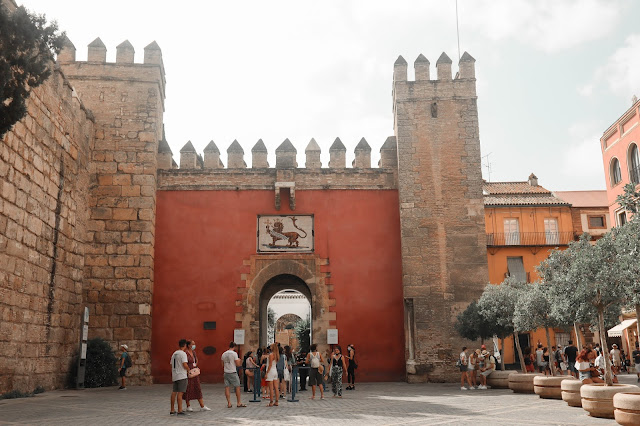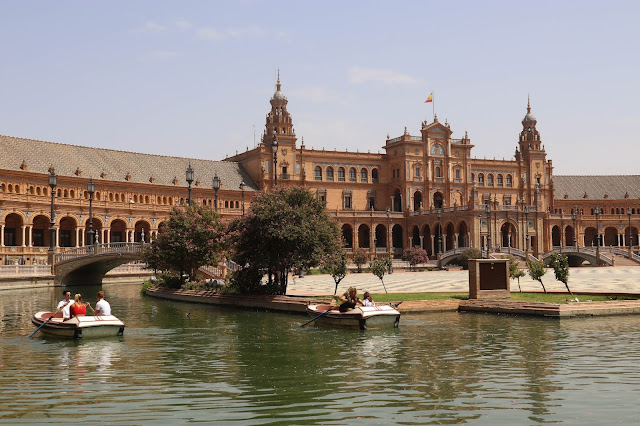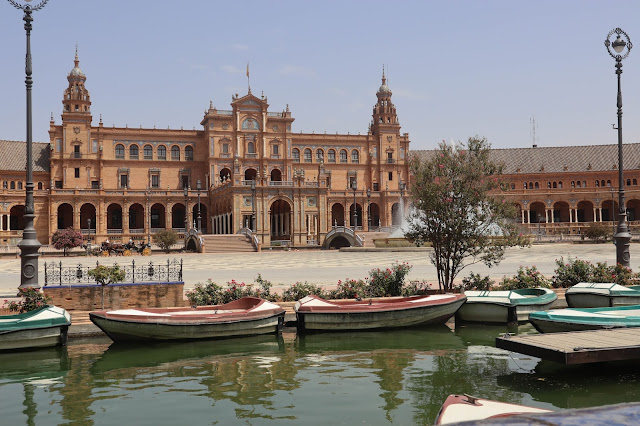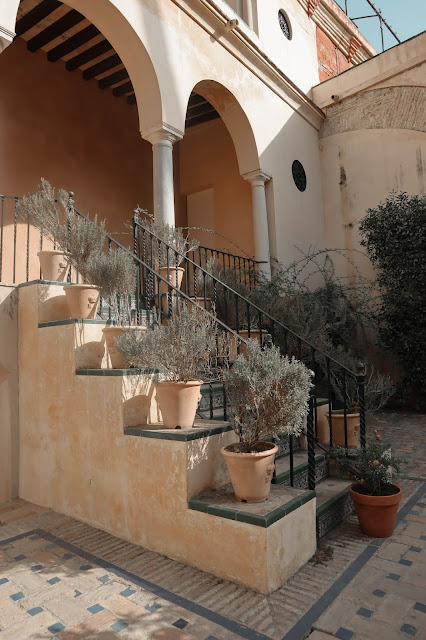Seville is a city that leaves its mark, and many people define it as special. It might be because of the grandeur of its monuments or perhaps the charm of various laid back areas. Seville is the capital and largest city of the Spanish autonomous community of Andalusia and the province of Seville. It is situated on the lower reaches of the River Guadalquivir, in the southwest of the Iberian Peninsula.
Sevilla is not located far from Ronda or Malaga, and easily accessible via plane or car. Flamenco clubs keep the intimacy and intensity of this centuries-old tradition alive whilst aristocratic mansions recall the city’s past as a showcase Moorish capital and, later, a 16th-century metropolis rich on the back of New World trade. There is so much to explore, from culture to their dining scene.
WHAT TO DO & SEE?
1. Royal Alcazar
The Royal Alcázars of Seville, historically known as al-Qasr al-Muriq, is a royal palace in Seville, Spain, built for the Christian king Peter of Castile. It was built by Castilian Christians on the site of an Abbadid Muslim alcazar, or residential fortress. The beautiful area with a peaceful garden is worth to visit while in Sevilla. Did you also know that on Mondays you get free entrance? But you need to reserve tickets online prior.
2. Plaza de España
The stunning Plaza de España is the famous square in Seville, located inside the Maria Luisa park. The shape of Plaza de España is a semi-circle, surrounded by a row of buildings that today are, for the most part, used as government institutions. Many tiled alcoves were built around the plaza, each representing a different province of Spain. Other fixtures of the square are the large fountain in the middle and the round canal with the many cute bridges. You can even rent a boat and sail through the canals.
3. Sevilla Cathedral and Giralda tower
The Cathedral of Saint Mary of the See, better known as Seville Cathedral, is a Roman Catholic cathedral in Seville, Andalusia, Spain. It was registered in 1987 by UNESCO as a World Heritage Site, along with the adjoining Alcázar palace complex and the General Archive of the Indies. The Giralda is the bell tower of Seville Cathedral in Seville, Spain. It was built as the minaret for the Great Mosque of Seville in al-Andalus, Moorish Spain, during the reign of the Almohad dynasty, with a Renaissance-style top added by the Catholics after the expulsion of the Muslims from the area.
4. Plaza del Cabildo
Picturesque plaza featuring a fountain & surrounding structures with artfully painted arches.
5. Archive of the Indies
The Archivo General de Indias, housed in the ancient merchants' exchange of Seville, Spain, the Casa Lonja de Mercaderes, is the repository of extremely valuable archival documents illustrating the history of the Spanish Empire in the Americas and the Philippines.
6. Edificio de la Adriatica
The La Adriatica Building was built in Seville between 1914 and 1922 on Cánovas del Castillo Street, now Avenida de la Constitución.
7. Setas de Sevilla observation deck
Metropol Parasol is a wooden structure located at La Encarnación square, in the old quarter of Seville, Spain. It was designed by the German architect Jürgen Mayer and completed in April 2011. It is a great alternative way to get some viewpoints of Seville old quarter.
8. Seville Museum of Fine Arts
A museum with a collection of mainly Spanish visual arts from the medieval period to the early 20th century.
9. Seville bullring
The Plaza de toros de la Real Maestranza de Caballería de Sevilla is a 12,000-capacity bullring in Seville, Spain. During the annual Seville Fair in Seville, it is the site of one of the most well-known bullfighting festivals in the world.
10. Flamingo show
It is not confirmed where flamingo dance started, but many believe that it is just here in Seville. Therefore you should explore an opportunity to go to see a flamengo show or festival. A flamenco show in the spiritual home of the dance is an experience not to be missed. You'll find many places to watch a flamengo, such as Tablao Flamenco El Patio Sevillano or even in some local tapas bars such as La Carboneria.
11. Casa de Pilaros
La Casa de Pilatos is an Andalusian palace in Seville, Spain, which serves as the permanent residence of the Dukes of Medinaceli. It is an example of an Italian Renaissance building with Mudéjar elements and decorations. It is considered the prototype of the Andalusian palace.
WHERE TO EAT & DRINK?
Andalusia is famous for its fish and shellfish and a tapa bar is a great place to sample the array. Tapas are a social way of eating and meant to incite conversation, usually found on bar and pub menus, and in Spain, they can be found all over various cities as locals go from place to place. Seville has plenty of tapas bars you can try from:
1. El Cabildo
A laid back tapas bar just on the Plaza del Cabildo.
Traditional tapas, sandwiches & regional dishes at a lively, wood-paneled bar with terrace tables.
Buzzing, snug venue specializing in tapas, fried bites & charcuterie boards, plus wine & draft beer.
Trendy rooftop perfect for cocktails and located just next to the cathedral, located on Mercer hotel.
Homey option with a menu featuring creative local tapas, seafood & meat plates, plus wine.
6. Las Teresas
Restaurant with an old-school bar & photo-filled walls, serving typical Spanish stews, meat & tapas.
7. Bar El Comercio
Another simple laid back place with great selection of tapas and drinks.
Storied 17th-century restaurant with tapas & traditional Spanish mains, plus an extensive wine list.
9. Freskura
The perfect mix of Italian knowledge and Andalusian innovation, Freskura bounded onto the ice cream scene in Seville. Perfect stop for some gelato on a warm day.











































2 Comments
Best school in bulandshahr
ReplyDeletebest private school in bulandshahr
Sevilla es una ciudad maravillosa que animo a todo el que lo haya visitado que la visite....es increíble y sinceramente no tengo palabras para describirla... de todas sus maravillas la que más me impactó fue por el barrio del Arenal y su tablao flamenco... esos artistas con su arte se me han quedado ya en la memoria y dentro del alma mía.
ReplyDelete